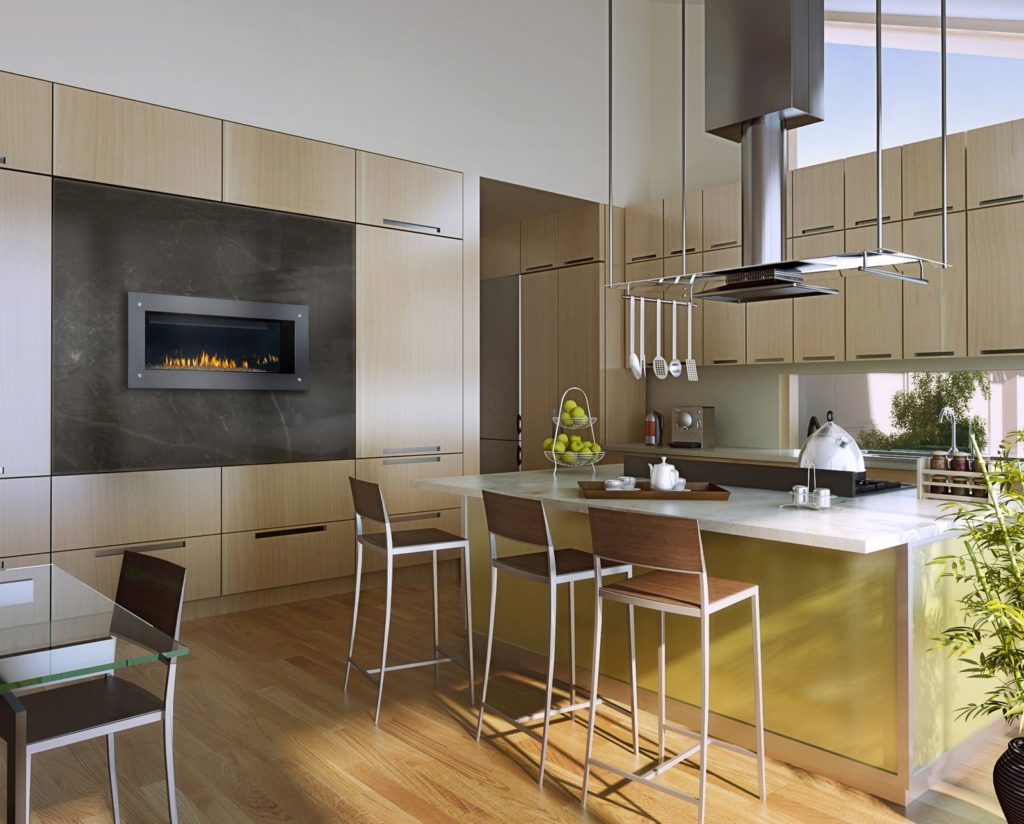Research Reveals Key Insights for Designing a Happier Home
Study examined how design affects emotions, which rooms are most impactful.
The following insights from the Hot Spots Research Study stood out as having the most potential to influence the way homeowners design their homes for maximum satisfaction.

New research study examined the connection people have to different rooms in their home, and how the design of those rooms can have a direct correlation to their emotions. (PRNewsfoto/Napoleon)
Hottest of the Hot Spots
A “Hot Spot” is a room or space associated with positive emotions and memories. When designed right—by overlapping key room dynamics—a Hot Spot can increase the overall satisfaction with one’s home. The most beloved rooms are designed to accommodate a balance of functionality, relaxation, and socialization.
In the study, rooms qualified as a Hot Spot when at least 50 percent of respondents checked at least two of the following emotional categories to describe that room: welcoming/social, cozy/warm, relaxed/peaceful, or fun/enjoyable. The more the emotional categories overlapped — the hotter the Hot Spot.
- Based on the above criteria, the following three rooms rose to the top as Hot Spots: Living Room, Bedroom and Kitchen.
- The Living Room was the hottest of the Hot Spots, ranking at more than 60 percent in all four categories.
- These three rooms stood out again when research participants were asked which rooms they considered the most important, and which rooms were their favorites.
- 73 percent considered the Living Room, Bedroom, or Kitchen as a favorite.
- The Living Room ranked the highest in favorability at 31 percent, followed by the Bedroom at 25 percent and the Kitchen at 17 percent.
- 84 percent considered the Living Room, Bedroom, or Kitchen as most important.
- The Living Room and Kitchen tied as the most important room in the home at 34 percent each, followed by the Bedroom at 16 percent.
- 73 percent considered the Living Room, Bedroom, or Kitchen as a favorite.
These insights confirm the Living Room, Bedroom, and Kitchen should be a focus in home design, as they are prime with potential to become even hotter Hot Spots. With smart design they can help skyrocket your connection to your home.
Creating Hot Spots
Just because research identified the Living Room, Bedroom and Kitchen as Hot Spots, that doesn’t mean other rooms in the home can’t also earn the distinction. The study found that Hot Spots don’t happen by accident, they can be created. A room’s ability to evoke positive emotions and memorable moments is directly related to the design and amenities of that room.
For example, when research participants were asked to create poster boards representing what they wanted in their next home, expectedly they gravitated to Living Rooms, Bedrooms and Kitchens; however, Fireplaces and Outdoor Spaces also stood out, demonstrating the potential for other spaces to reach Hot Spot status.
“There are countless design strategies to increase a room’s appeal,” said President of Visbeen Architects Wayne Visbeen, who worked with Napoleon on the Hot Spots Research Study. “From creating a focal point and rearranging furniture to incorporating different textures and patterns or adding more seating for socializing, even small changes can have a big impact.”
Bottom line, a room’s Hot Spot potential is in its design.
Fireplaces Spark Emotion
Fire has been essential to life since the dawn of man, so it was no surprise fireplaces evoked strong positive emotions in the research. The following findings substantiate the impact fireplaces have on room satisfaction:
- When evaluating the rooms in their current home, homeowners were much more likely to associate positive emotions with the rooms that had fireplaces compared to the rooms that didn’t.
- Research participates were asked where they currently have fireplaces in their home, and where they’d like to have them in their next home. The largest discrepancy was found in the Bedroom and Outdoor Space, revealing an opportunity for homeowners considering remodeling to add a fireplace to these spaces.
- Furthermore, when participants were exposed to pictures of rooms with and without certain amenities, including fireplaces, desire for rooms with fireplaces increased 41 percent.